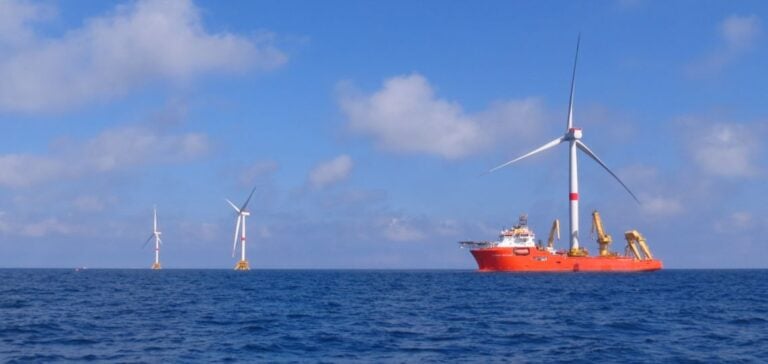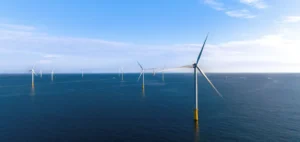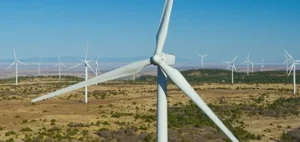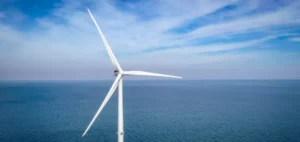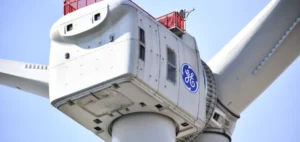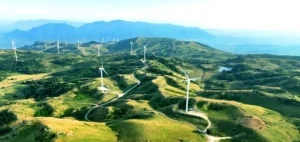EDF Group, through its subsidiary EDF Renouvelables, and Enbridge Éolien France 2 S.a.r.l, a subsidiary of Enbridge Inc. and Canada Pension Plan Investment Board (CPP Investments), have announced the full commissioning of Provence Grand Large, the first floating offshore wind farm in France and the Mediterranean. Located 17 km off the coast of Port-Saint-Louis-du-Rhône, this pilot project consists of three floating turbines with a total capacity of 25 MW. It is expected to supply the annual electricity consumption equivalent to 45,000 people.
Innovative anchoring technology
The wind farm is based on an innovative anchoring system using taut-line moored floaters, a first in the floating wind sector. Developed by SBM Offshore and IFP Energies Nouvelles, this technology is specifically adapted for deep-sea locations and ensures optimal floater stability. The turbines, manufactured by Siemens Gamesa Renewable Energy, are connected to shore via dynamic cables developed by Prysmian, enabling the transmission of generated electricity.
A project supported by institutional stakeholders
The project received backing from various stakeholders, including the French government, the European Union, the French Agency for Ecological Transition (ADEME), and the Southern Region. Its launch is part of a broader initiative to diversify renewable energy sources and strengthen France’s renewable energy industry. Continuous dialogue with local stakeholders, including fishers and associations, played a key role in addressing local and environmental concerns throughout the project.
A model for the future of floating wind
Bernard Fontana, Chairman and Chief Executive Officer of EDF, expressed his satisfaction with the project’s commissioning, stating that it contributes to France’s energy sovereignty and supports the development of innovative technologies. Enbridge and CPP Investments, key partners in the venture, also highlighted the importance of this development for the offshore wind sector, marking a significant step in the region’s energy transition.


